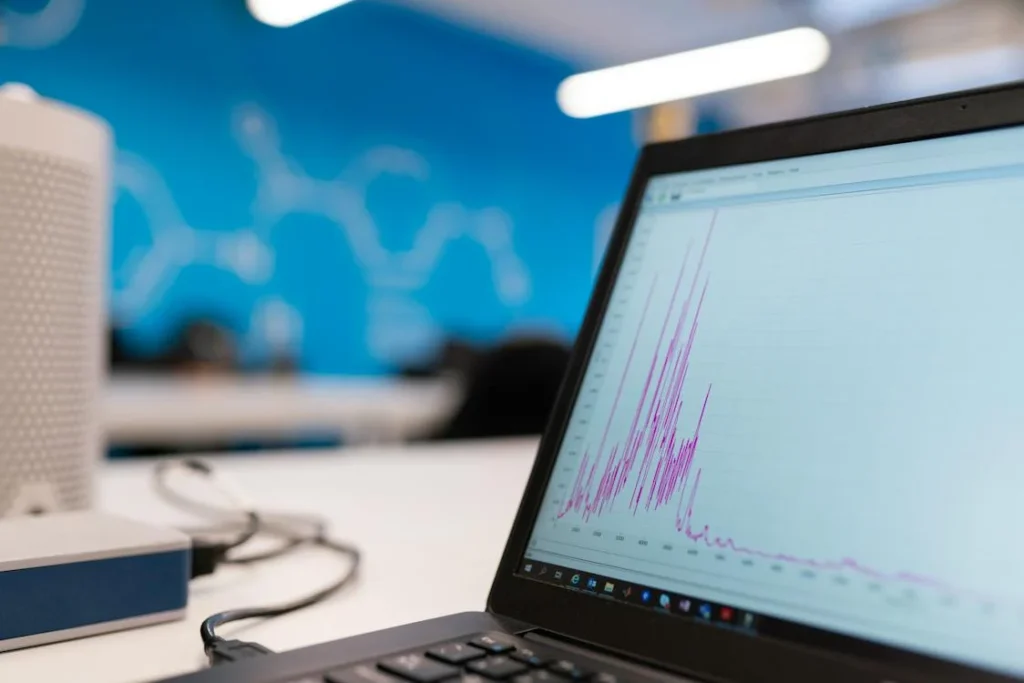In the multifaceted world of digital marketing, lead generation remains a core focus for businesses striving to expand their reach, engage potential clients, and convert interests into actionable sales. Amidst the plethora of strategies and tools available, surveys have asserted their prominence, not just as instruments of gathering data but as potent catalysts for generating and nurturing leads. “How to Optimize Lead Generation Surveys for Insights” ventures into the intricate pathways of effectively crafting, disseminating, and analyzing surveys to extract valuable insights that enhance lead generation efforts.
The Genesis of Effective Surveys
Surveys are not arbitrary questionnaires flung in the digital space, hoping to latch onto some actionable data. They are meticulously crafted instruments, each question engineered with precision, each response a potential goldmine of insights. The initial step in this journey is not the creation but the clear delineation of objectives. What do we seek to unravel? Is it the audience’s preferences, their pain points, or perhaps an assessment of a product’s resonance in the market?
The Anatomy of Questions
Crafting questions is an art intertwined with science. An effective survey question is concise, direct, and constructed to elicit responses that offer profound insights. However, the beauty lies not just in the individual questions but their orchestrated symphony, a sequence that guides the respondent seamlessly, maintaining engagement while unraveling the layers of valuable data.
Segmenting the Audience
The efficiency of a survey is not just encapsulated in the questions but is also profoundly influenced by its recipients. Audience segmentation elevates a survey from a generic tool to a personalized interaction. Each segment of the audience, characterized by distinct behaviours, preferences, and pain points, provides a unique perspective. Tailoring surveys to resonate with specific segments amplifies engagement and enriches the quality of insights gathered.
Technical Aspects of Survey Design
Beyond the content, the technical aspects of a survey play a pivotal role in its effectiveness. The user interface, accessibility, and responsiveness across devices transform the survey experience. In an era where the attention span is akin to a flicker, the ease of navigation and aesthetic appeal of surveys become the silent factors influencing completion rates and, consequently, the richness of data accrued.
Analytical Perspectives
The potency of surveys is unlocked in the analytics. Each response, when meticulously analysed, morphs into insights that empower businesses to tailor their strategies. Tools equipped with AI and machine learning algorithms sift through the data, highlighting patterns, behaviours, and trends. These insights, when integrated into lead generation strategies, enhance precision, personalization, and efficacy.
Optimization Strategies
But how do we optimize these surveys? A/B testing emerges as a formidable ally. By presenting variations and meticulously analyzing the responses, businesses can hone their surveys for optimal engagement and insights. The iterative process of refinement, fueled by real-time data, ensures that the surveys are not static but evolve, mirroring the dynamic nature of the market and audience preferences.
Integration with CRM Systems
One of the pivotal aspects of optimizing lead generation surveys involves seamless integration with Customer Relationship Management (CRM) systems. The insights drawn from surveys are not siloed but dynamically interact with the customer data, painting a holistic portrait of the audience. Each response, each interaction enriches the CRM, enhancing the precision of targeting and personalization.
Personalization of Surveys
As we delve deeper, the role of AI-powered analytics becomes undeniably evident. Machine learning algorithms tailor surveys in real-time, ensuring that each question resonates with the individual respondent. This personalization is not mere customization but is rooted in deep learning insights, drawing from the behavioral patterns, historical data, and predictive analytics.
Ethical Considerations
Yet, as we navigate this intricate landscape of personalized surveys, ethical considerations ascend to prominence. Data privacy and ethical use of information emerge as cornerstones. Transparent policies, stringent security protocols, and ethical AI form the trinity safeguarding the sanctity of respondent’s data while ensuring that the insights are gleaned in adherence to the global standards and regulations.
Multi-lingual Surveys
In the global digital landscape, multilingual surveys transcend linguistic barriers, amplifying reach and engagement. The AI-powered translation tools ensure that the essence of questions is not lost in translation, ensuring uniformity of responses and richness of insights across geographies.
The Road Ahead
As we gaze into the future, the evolution of surveys is evidently aligned with technological advancements. Blockchain for data security, quantum computing for processing, and augmented reality for enhanced engagement are not distant dreams but imminent realities. The survey of the future is not just a tool but an interactive, engaging, and secure platform for real-time insights.
A Dynamic Tool for Business Intelligence
In essence, the optimization of lead generation surveys is an ongoing journey, intricately woven into the fabric of business strategies. It’s a dynamic tool, ever-evolving, mirroring the rapid advancements in technology and the fluidity of consumer preferences. Each response, each insight is a step towards enhanced business intelligence, elevated customer experience, and amplified ROI.
Real-Time Feedback and Iteration
The agility of lead generation surveys is rooted in real-time feedback and instantaneous iterations. In the digital age, the turnaround time for insights is markedly reduced, enhancing the responsiveness of businesses to emergent trends and real-time feedback. Each survey is not a static entity but a dynamic instrument of engagement, evolving in real-time, responsive, and adaptive.
AI-Powered Analytics
AI-powered analytics is the unsung hero that works behind the scenes, transforming raw data into actionable insights. But beyond numbers and graphs, AI delves into the qualitative aspects. Sentiment analysis, emotion detection, and behavioral analytics translate the intangibles into tangible metrics, offering multidimensional insights that are integral to strategy formulation and decision-making.
Gamification in Surveys
While we have touched upon the aesthetics and usability of surveys, gamification emerges as a key player in enhancing engagement. Embedding game elements in surveys not only augments participation rates but also enriches the quality of responses. Each interaction, each engagement is a melange of entertainment and insights, ensuring that respondents are not just participants but are actively engaged, offering deeper, more insightful responses.

Related: Check out our free SEO suite

Mobile-First Approach
In a world teetering towards mobile dominance, mobile-first surveys are not an option but a necessity. The optimization is not just in terms of compatibility but ensuring that the mobile experience is intuitive, engaging, and seamless. From swipes to voice inputs, every element of the mobile survey is finetuned to the unique behavioral patterns of mobile users.
Predictive Analytics
Looking beyond the present, predictive analytics propels surveys into the future. Each response is not just a reflection of the present but offers a gaze into the future trends. Predictive modeling, powered by AI, ensures that businesses are not just responsive but are anticipatory, staying ahead of the curve, preempting trends, and tailoring strategies that are future-ready.
Integration of Virtual and Augmented Reality
As technology continues to advance, the incorporation of virtual and augmented reality into surveys is an untapped goldmine. Imagine a respondent not just answering questions but immersing in an interactive environment where each response is an experience, enhancing the richness and depth of insights. It’s not just about what they say but how they feel, the emotions, and the intangibles captured in real-time, offering a 360-degree view of the respondent.
Customization versus Standardization
In the quest for personalization, the balance between customization and standardization is pivotal. Each survey, while tailored, adheres to the core principles ensuring that the insights are comparative, the metrics standardized, and the insights universally applicable. It’s a dance between the unique and the universal, ensuring that personalization does not dilute the core essence of the survey.
Conclusion
In the complex ecosystem of lead generation, surveys have evolved to be powerful tools, transcending the traditional boundaries of data collection to become a dynamic platforms for engagement, insights, and business intelligence. Each question posed, every response elicited, is not just a datum but a rich source of insights, a blend of quantitative and also qualitative data that drives in business decisions.
Yet, the survey is not the end but the means to the end – the ultimate goal of conversion. The insights gleaned, the data harvested, the feedback obtained, are all instrumental in shaping, refining, and optimizing conversion strategies. Here, the role of predictive analytics becomes pivotal. We are not just mapping the present landscape but predicting future trends, preempting consumer needs, and tailoring strategies that are not just responsive but are anticipatory. The future of lead generation surveys is as dynamic as the digital landscape. It’s an evolving, adaptive, and responsive entity, continuously morphing, adapting, and evolving in response to the ever-changing consumer behaviors, market trends, and technological innovations. As businesses, the onus is to not just keep pace but to stay ahead, to not just adapt but to lead.
READ NEXT:
- Twitter and Its SEO Implications for Financial Brands
- How to Dominate Google Rankings for Every Type of Loan Service
- What is a SMART Plan? And, Why You Need One
- Cultural Sensitivities in International Financial SEO
- An Overview of Special Economic Zones in India
- 51+ Outstanding Email Marketing Tools to Skyrocket ROI
- HIPAA Compliance in SEO for Medical Websites






















Comments are closed.